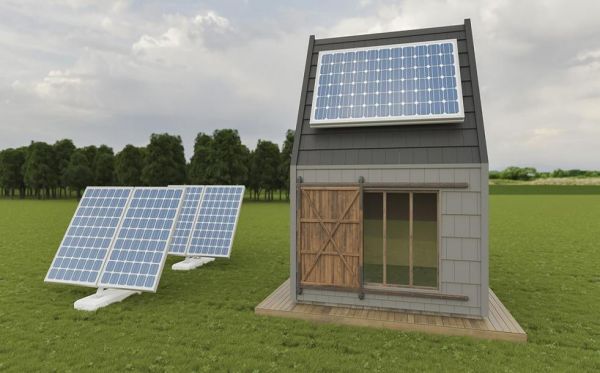Ground-mounted and rooftop solar panel installations are two common options for residential and commercial solar energy systems. Each has its advantages and considerations, and the choice between them depends on several factors, including available space, orientation, cost, and personal preference. Here are some key considerations:
Space availability: Ground-mounted systems require open land or a large yard to accommodate the solar panels. They are suitable for properties with plenty of space. Rooftop installations, on the other hand, utilize roof space and are ideal for properties with limited ground space.
Alignment and tilt: Ground mounts offer more flexibility in panel orientation and tilt angle. They can be adjusted to maximize solar energy production throughout the day and year. Rooftop installations, on the other hand, are limited by the orientation of the roof and may not offer the same level of adjustability.
Installation and maintenance: Ground-mounted installations generally require more extensive installation, including digging foundations and setting up racking systems. Rooftop installations are typically simpler and involve mounting the solar panels on the roof. Maintenance for both options typically includes periodic cleaning and inspection for potential shading issues.
Cost: Ground-level installations tend to have higher upfront costs due to the additional materials and labor required for installation. Rooftop installations may be more cost-effective because they utilize existing structures. However, individual circumstances and factors such as roof condition and slope may affect the overall cost.
Shading and Obstructions: Roof mounts may be shaded by nearby trees, buildings, or other structures. Ground mounts can be installed in less shaded areas to ensure maximum reception of sunlight.
Aesthetics and Visual Impact: Some people prefer rooftop mounting because the solar panels blend in with the building structure and are less visually obtrusive. Ground mounts, on the other hand, are more conspicuous, but they can be mounted in locations that minimize visual impact.
Another factor to consider is the lifespan of the installation. Ground-mounted and rooftop installations have similar lifespans, typically around 25 to 30 years, but certain factors can affect the lifespan.
For ground-mounted installations, exposure to environmental factors such as rain, snow, and temperature fluctuations can affect their lifespan. However, ground-mounted systems are typically easier to maintain and repair than roof-mounted systems, which may require additional labor and equipment to access.
Rooftop installations, on the other hand, may be subject to wear and tear from the roof itself, such as potential leaks or damage from high winds or storms. It is important to make sure that the roof is in good condition and can support the weight of the solar panels.
It is important to note that some homeowners associations or municipalities may have restrictions or regulations on solar installations. It’s a good idea to check with your local government to find out what guidelines or permits are required for ground-mounted or rooftop installations before making a decision.
Finally, consider your energy goals and the potential benefits of each option. Both ground-mounted and rooftop installations can reduce reliance on traditional energy sources, resulting in significant energy savings and environmental benefits. Depending on the location and size of the system, solar energy can offset some or all of your energy consumption, resulting in long-term cost savings and a reduced carbon footprint.
Post time: Sep-06-2023
